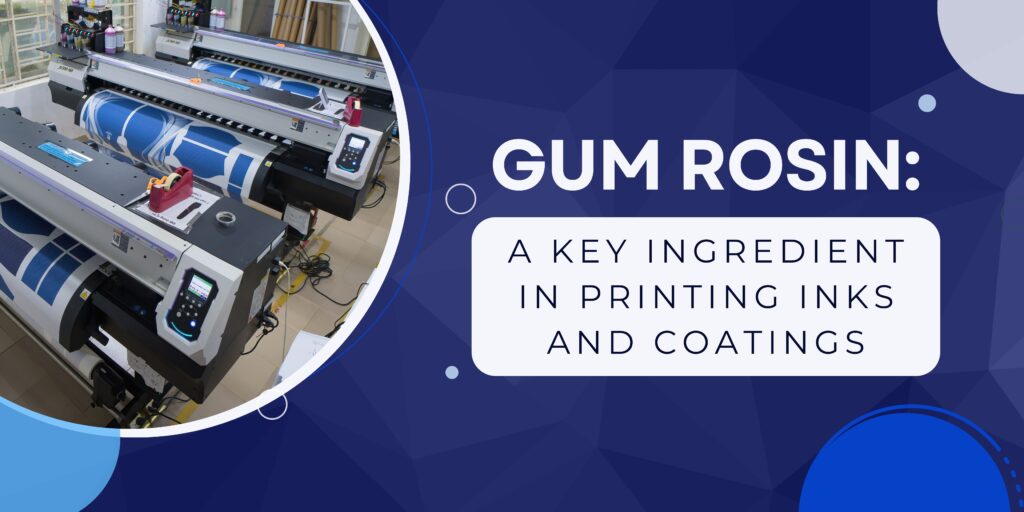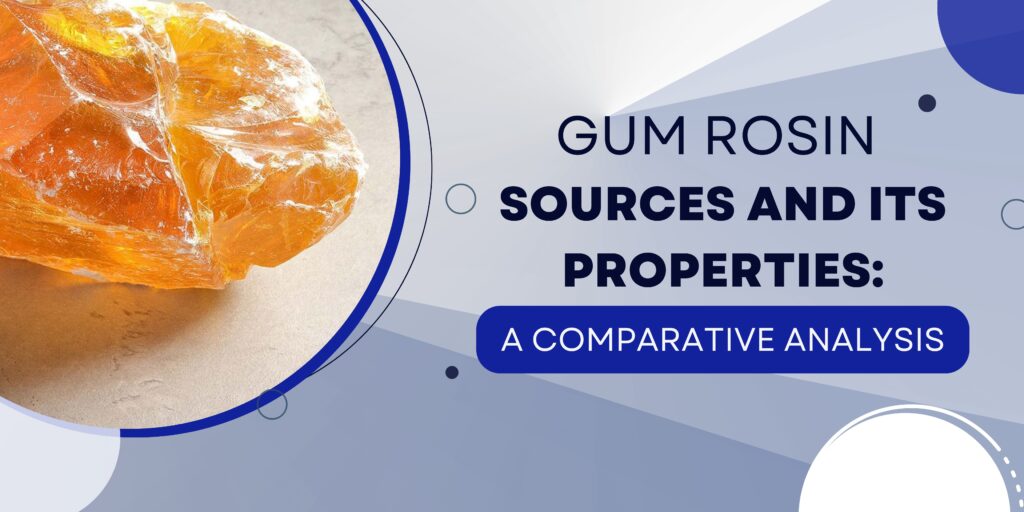
Printing inks and coatings are fundamental components of the modern world, facilitating communication, artistic expression, and product packaging. Within these formulations, one of the crucial and versatile components is gum rosin, a natural resin derived from pine trees. This article delves deeper into the role of gum rosin as a pivotal ingredient in printing inks and coatings, examining its chemical properties, applications, and the impact it has on various industries.
Understanding the Chemistry of Gum Rosin
Gum rosin is primarily composed of resin acids, including abietic acid, pimaric acid, and levopimaric acid. These resin acids lend gum rosin its adhesive and tacky properties, making it an indispensable element in a wide array of industrial applications. The molecular structure of gum rosin allows it to form strong bonds with other materials, reinforcing its effectiveness as a binder in printing inks and coatings.
Properties Crucial to Printing Inks and Coatings
1. Adhesive Properties
Gum rosin’s adhesive capabilities stem from its ability to establish robust bonds with various substrates. This property is particularly important in the formulation of adhesives, where reliable bonding is essential.
2. Solubility
Gum rosin’s solubility in a variety of organic solvents is a pivotal characteristic for its successful integration into ink and coating formulations. The ability to dissolve readily ensures a homogeneous mixture, contributing to the quality and consistency of the final product.
3. Viscosity Control
Control over viscosity is crucial in the world of printing inks and coatings. Gum rosin assists in managing viscosity, ensuring that the ink or coating spreads evenly and adheres optimally to the substrate, ultimately influencing the final finish.
4. Color and Clarity
Gum rosin’s transparency has a direct impact on the color and clarity of the ink or coating. Its ability to maintain color integrity and clarity contributes significantly to the aesthetics and appeal of the end product.
5. Drying Properties
In the context of printing inks and coatings, gum rosin facilitates the drying process by promoting the evaporation of solvents. This attribute ensures that the ink or coating sets effectively, achieving the desired results.
Applications of Gum Rosin in Printing Inks
Flexographic Inks
Flexographic printing employs flexible relief plates to transfer ink onto a wide range of substrates. Gum rosin is a vital component in the formulation of inks for this method, providing the necessary adhesion and ensuring accurate and consistent printing on various materials.
Lithographic Inks
Lithography relies on the principle of oil and water repulsion to create prints. Gum rosin plays a key role in maintaining this balance, contributing to the precise printing and sharp image reproduction characteristic of lithographic processes.
Gravure Inks
Gravure printing involves engraving an image onto an image carrier. Gum rosin’s adhesive properties are essential in gravure inks, ensuring that the ink adheres effectively to the engraved areas, resulting in high-quality, consistent prints.
Applications of Gum Rosin in Coatings
Varnishes
Varnishes serve to protect printed materials while providing a glossy finish. Gum rosin enhances the adhesive properties of varnishes, aiding in achieving the desired gloss and durability while preserving the printed image.
Lacquers
Lacquers are coatings that enhance the appearance and protect a variety of surfaces. Gum rosin provides adhesion, durability, and gloss to lacquers, making it a critical component in their formulation.
Overprint Varnishes
Overprint varnishes are applied to previously printed material to enhance its appearance and protection. Gum rosin contributes to the formulation of overprint varnishes, ensuring their adhesion to the existing print, thus achieving the desired aesthetic and protective qualities.
Environmental Considerations and Sustainability
The sustainability of gum rosin extraction is a growing concern, given the increasing demand for this versatile resin. Sustainable harvesting practices, reforestation efforts, and responsible management of pine tree resources are essential to ensure a continuous and environmentally conscious supply of gum rosin.
Conclusion
Gum rosin’s unique chemical properties make it an essential and versatile ingredient in printing inks and coatings. Its adhesive characteristics, solubility, viscosity control, and influence on drying properties contribute significantly to the quality and performance of printing inks and coatings across various printing processes. Furthermore, gum rosin plays a critical role in coatings, enhancing their appearance, protection, and durability. However, it is imperative to adopt sustainable practices in the sourcing and utilization of gum rosin to ensure the longevity of its availability and minimize environmental impact in the long run.




